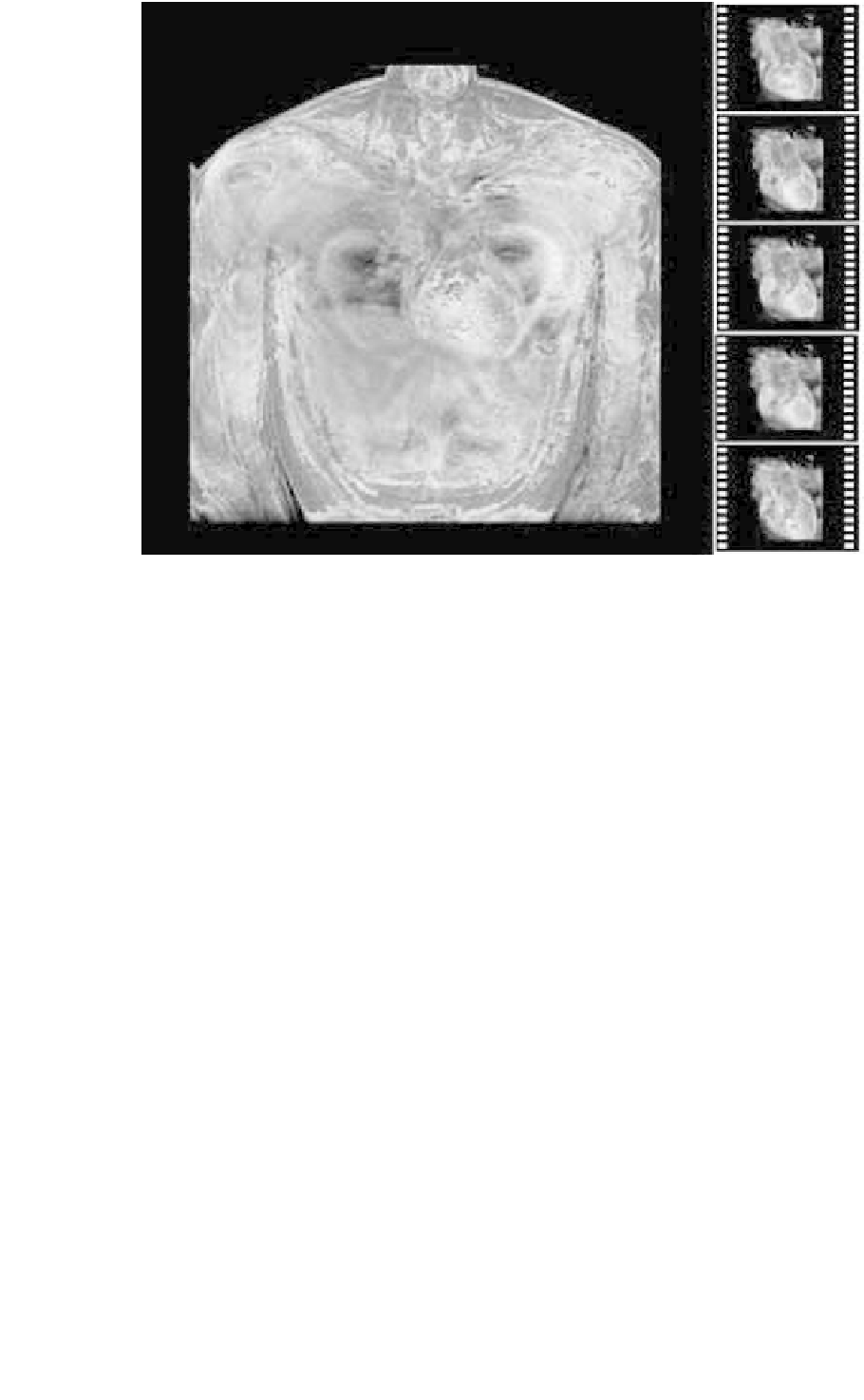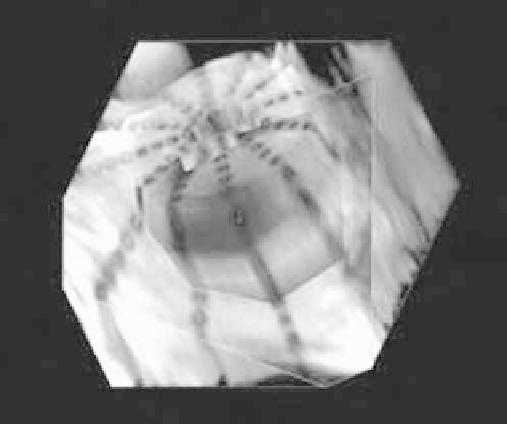Biomedical Engineering Reference
In-Depth Information
Figure 6.6-2 Visualization of beating heart: interactive dynamic volume rendering of cardiac cine-MR images. The cine frame snapshots
show the contraction cycle. (Images courtesy of M. Solaiyappan, Tim Poston, Pheng Ann Heng, Elias Zerhouni, Elliot McVeigh.)
Maximum intensity projection
The earliest volume visualization method is known as
maximum intensity projection (MIP). As the name sug-
gests, in this approach, the maximum intensity value in
the volume data is projected on the viewing plane along
each ray of the projection. This technique is particularly
useful for displaying vascular structures acquired using
angiographic methods.
Volume rendering
The ''ray-casting'' approach was further explored to
produce new visualization concepts in medicine that
shared a common principle but approached the solution
differently. Instead of choosing the maximum value along
each ray, the general idea was to accumulate all data
points along the ray with appropriate weights and to
produce an aggregate value that is projected on the
viewing plane. This led to the development of various
volume-rendering techniques
[23-27]
.
Various accumulation models were employed to pro-
duce different results. For instance, a simple summation
of all the points along the ray can produce line-integral
projections similar to X-ray images. The simple summa-
tion operation is a less intensive operation than other
complex accumulation operations. This may be useful for
simulating X-ray type images, but because the image will
be dominated by structures that have maximum data
values irrespective of their spatial distance from the
viewing plane, this technique is less desirable to produce
a 3D effect in the rendered image. The most popular
technique turned out to be one that used a ''blending''
operation similar to the one used for antialiasing during
scan conversion or scene composition
[22]
. The blending
Figure 6.6-3 Visualization of left ventricle strain fields (color-
coded) combined with tagged MR volume.





